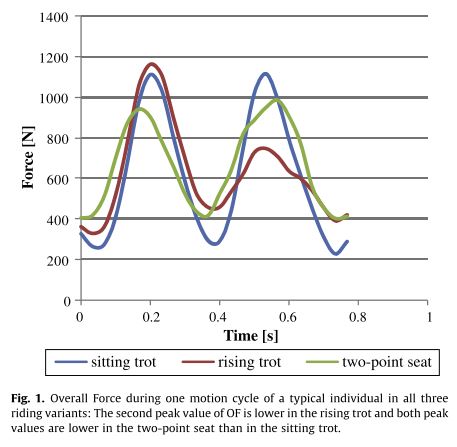
A comparison of forces acting on the horse’s back during trot
This study aims to compare the stability of the rider and the forces acting on a horse’s back with three different seating positions at the trot. This was tested by one experienced rider who performed rising trot, sitting trot and two-point trot for 20 seconds on ten different horses on a treadmill. The two-point trot refers to the contact of both legs with the horse, while the body is suspended above the saddle. An electronic pressure mat was placed underneath a well-fitting saddle to record the kinematic data in the transverse and longitudinal axes.
The results concerning stability of the rider showed that the stability in the longitudinal axes was significantly highest in the two-point seat, respectively followed by the rising trot and the sitting trot. However in the transverse axes there was no significant difference when comparing the three positions. The higher stability of the rider allows more efficient aids and therefore better communication.
Concerning the load on the horse's back, the results showed that the significantly highest load occurred during sitting trot (2112 N), followed by rising trot (2056 N) while the two-point seat had the lowest load (1688 N). In total, the rider was most stable in the two-point seat while transferring the lowest load on the horse’s back. This explains why young horses are often ridden in the two-point trot, although this is a demanding position for the rider.
> Peham et al. The Veterinary Journal. 2010;184(1):56-59. All rights reserved to 2009 Elsevier Ltd. Click here for the Pubmed summary


